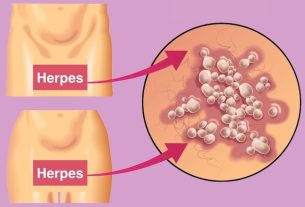Home remedies for psoriasis, such as aloe vera compresses, calendula poultices and watercress juice, for example, help combat skin peeling and inflammation related to psoriasis, as they have purifying, analgesic and anti-inflammatory properties. and healing.
The use of home remedies for psoriasis does not replace the treatment recommended by a dermatologist, which normally involves the use of appropriate creams and ointments. Understand how psoriasis is treated.
Psoriasis is a skin disease that has no cure, is not contagious and causes symptoms such as red plaques on the skin, peeling and dry skin, itching and a burning sensation and pain, which can affect various regions of the body.
See these and other important tips for controlling psoriasis by watching the video:
Top home remedies
Some home remedies have proven effectiveness for some cases, especially mild or moderate ones, and can be tried as a complement to the treatment recommended by the doctor, the main ones being:
1. Aloe compresses
Aloe vera is a plant known scientifically as aloe vera and which is widely used in natural medicine to treat various health problems, including skin changes. In the case of psoriasis, the gel from this plant can be used to relieve itching, redness and even help with the healing of blemishes, reducing the duration of psoriasis attacks.
This happens because aloe vera is a plant very rich in substances with proven anti-inflammatory, healing and anti-itching properties.
Ingredients:
- 1 to 2 aloe leaves;
- Clean compresses.
Preparation mode:
Cut the plant leaf lengthwise and remove the gel inside using a spoon. Then, apply the gel directly to the area with psoriasis, wrapping it with a clean compress and some bandages.
Leave to act for around 20 to 30 minutes a day and wash with water only. For best results, you should do this compress up to 3 times a day for at least 4 weeks.
2. Chamomile infused wash
Chamomile is another of the plants most used in natural medicine, especially to treat stomach problems and anxiety. However, the flowers of this plant have an important essential oil, known as chamazulene, which can be used to reduce inflammation in various skin problems, such as psoriasis.
Specifically in the case of psoriasis, the camazulene in chamomile appears to lead to the formation of another substance, leukotriene B4 (LTB4), which prevents the development of plaques, improving psoriasis symptoms.
Ingredients:
- 4 tablespoons of chamomile flowers, preferably fresh;
- 500 ml of boiling water.
Preparation mode:
Add the water with the chamomile flowers and let it rest for 5 to 10 minutes. Then strain the mixture and let it cool. Finally, pour the chamomile infusion over the psoriasis plaques and let it air dry. This wash can be done after bathing or up to 3 times a day.
Another option, for more serious cases or those with more intense symptoms, consists of soaking clean compresses in the infusion and applying it to the skin for 20 to 30 minutes, 3 to 4 times a day.
3. Calendula poultice
Although it is less known, calendula is a flower that has excellent healing, analgesic and anti-inflammatory properties, and is therefore often used in natural medicine to treat skin problems, including psoriasis, eczema and even leprosy.
Ingredients:
- 3 to 4 flowers and marigold.
Preparation mode:
Knead the flowers using a mortar and then place the mixture on the psoriasis plaques, leaving it to act for 15 to 20 minutes. Finally, wash the skin with water and let it air dry.
Some people may be more sensitive to calendula essential oils, so if side effects occur, such as a burning sensation on the skin, the mixture should be removed from the skin and washed with running water, without applying the mixture to the skin again. skin.
4. Watercress juice
Watercress juice is an excellent option for treating psoriasis due to its purifying effect, which helps eliminate toxins from the body and reduce the frequency of psoriasis attacks. To prepare the juice, simply blend 70g of watercress with 1 glass of water in a blender and then drink it at least 3 times a day.
Furthermore, consuming raw watercress, in salads, for example, is also a great way to treat psoriasis. Other watercress recipes include:
- Sautéed watercress;
- Watercress salad with white cheese and tomato;
- Pumpkin soup with watercress;
- Oxtail with watercress.
The use of blood purifying foods, such as watercress, can prove to be very efficient as helpers in the treatment of psoriasis, but it is also important to avoid fatty foods, meats, processed meats, processed foods and spicy foods, as they promote the inflammatory process in the body. Check out all the nutritional tips recommended to treat psoriasis.
5. Natural cayenne pepper cream
This cream cannot be made at home but is another natural and proven option for relieving psoriasis symptoms, especially itching and redness. This is because cayenne pepper contains a substance known as capsaicin, which appears to reduce the presence of “substance P” in psoriasis plaques, which is mainly responsible for the itching sensation.
Therefore, the ideal is to look for a cayenne pepper or capsaicin cream, at 0.025% or 0.075%, in natural product stores and apply it to the skin, following the manufacturer’s or doctor’s instructions.
Home treatment for psoriasis
To complement the effects of home remedies, it is important to take some precautions, such as:
- Increase consumption of foods rich in beta-carotenesuch as orange, carrot and pumpkin;
- Increase consumption of foods rich in omega 3such as tuna and salmon, due to their anti-inflammatory action;
- Take evening primrose oil supplementdue to the presence of gamma-linoleic acid in its composition, which works to reduce inflammation;
- Avoid consuming foods rich in caffeinesuch as coffee, black tea and chocolate.
Furthermore, you should avoid consuming red meat and fried foods, which are foods rich in fat and cholesterol and, therefore, increase inflammation in the body and the risk of psoriasis symptoms appearing.

Sign up for our newsletter and stay up to date with exclusive news
that can transform your routine!
Warning: Undefined array key "title" in /home/storelat/public_html/wp-content/plugins/link-whisper-premium/templates/frontend/related-posts.php on line 12
Warning: Undefined array key "title_tag" in /home/storelat/public_html/wp-content/plugins/link-whisper-premium/templates/frontend/related-posts.php on line 13




